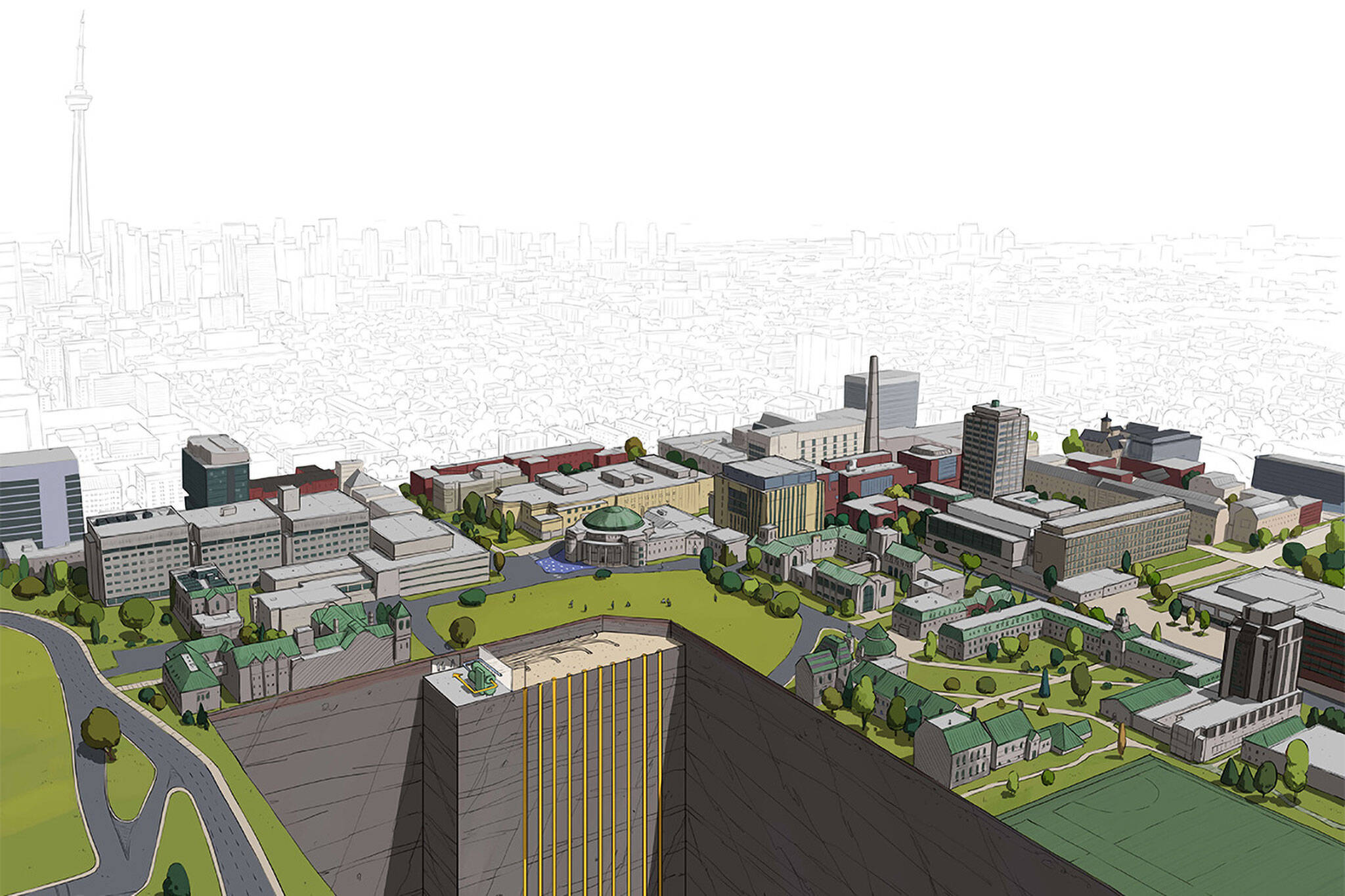
Canada's largest geoexchange system is being built hundreds of metres below Toronto
It may not get the same level of attention as the massive skyline-transforming towers popping up around Toronto, but a project of astounding scale is taking shape deep below the University of Toronto's St. George Campus.
As part of an ambitious climate plan, U of T is constructing a project of epic proportions, but you'd never know it from the visible work being conducted above ground.
It's all part of the university's ongoing Landmark Project, which includes an enormous subterranean geoexchange system harnessing geothermal energy deep underground, known as the King's College Circle Geothermal Project.
Despite the lack of visible heavy activity beyond some drilling equipment and trucks, the project is hailed as Canada's largest urban geoexchange system
Anticipated to reduce the institution's annual greenhouse gas emissions by 15,000 tonnes of carbon dioxide equivalent by the year 2024, a major planned contributor to U of T's lofty annual emission-reduction target of 44,567 tonnes.
Construction has been ongoing for two years now, during which time crews have bored over 370 wells below the centre of King's College Circle.
A series of U-shaped pipes inserted into these boreholes will form a closed loop filled with a mixture of glycol and water, linked to a network of heat pumps serving U of T buildings.
These pipes reach a staggering depth of 250 metres, just a few metres shy of the TD Canada Trust Tower's height. If you linked all of the piping end-to-end, it would span approximately 185 kilometres, long enough to traverse the distance between Toronto and London, ON.
The project offers more than just a means to an end for the university, doubling as a learning opportunity capable of giving students an in-person experience with these green energy systems.
In a recent article published by the university, U of T's chief operating officer of property services and sustainability, Ron Saporta, states that the system "serves as a demonstration project for our city to show how you can start to decarbonize not only new buildings, but even the most historic ones."
"We've designed the mechanical room in such a way that we can actually host lectures in there," Saporta told U of T News.
"We're also planning to colour-code the pipes so it will be easier to understand which one does what. In the future, engineering students won't just read about geoexchange in textbooks, they'll be able to physically see how it works."
University of Toronto
Latest Videos
Latest Videos
Join the conversation Load comments







